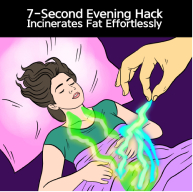Stress affects us all—but for women over 35, juggling work, caregiving, and personal health, chronic stress becomes a health threat. The good news? We don’t need vague advice—we need actionable solutions grounded in research.
This article doesn’t just talk about stress. It shows you how to solve it—step by step, using evidence-based methods pulled directly from comprehensive research. You’ll learn how to:
- Identify stress at its physiological root
- Apply specific, proven techniques (like MBSR and CBT)
- Create and customize a stress management plan
- Evaluate results and improve over time
Let’s start with the real problems—and how to fix them.
Problem 1: Chronic Activation of the Stress Response System
The Issue
The HPA axis (hypothalamic–pituitary–adrenal system) governs your body’s stress response. When constantly activated, it:
- Increases cortisol for prolonged periods
- Disrupts digestion, immune defense, sleep, and mood
- Leads to hypertension, depression, and cognitive decline
This is not just emotional—it’s neurological and biochemical stress overload.
Solution: Interrupt the Cycle with Mindfulness-Based Stress Reduction (MBSR)
According to the research, MBSR has measurable impacts:
- Reduces cortisol secretion over time
- Rewires brain regions responsible for emotional regulation (e.g., prefrontal cortex)
- Enhances present-moment awareness, reducing reactivity to stress
How to Apply It:
- Begin with an 8-week MBSR course (online or local group)
- Practice 10 minutes daily mindfulness meditation
- Use body scans or breath awareness during high-stress moments
Why It Works:
MBSR targets meta-cognitive loops like rumination—key culprits in chronic stress.
Problem 2: Cognitive Distortions That Amplify Stress
The Issue
Women often fall into maladaptive thought patterns:
- Catastrophizing (“This will ruin everything”)
- Black-and-white thinking (“If I fail once, I’m a failure”)
- Self-blame (“It’s my fault I’m overwhelmed”)
These patterns fuel emotional dysregulation and keep the stress cycle going.
Solution: Reframe with Cognitive Behavioral Therapy (CBT)
CBT restructures thinking by teaching:
- Awareness of automatic thoughts
- Identification of cognitive errors
- Replacement with more balanced, realistic interpretations
How to Apply It:
- Work with a CBT therapist (in-person or telehealth)
- Use structured CBT journals or apps
- Practice thought-challenging exercises when overwhelmed
Evidence from the Report:
- CBT shows significant cortisol regulation
- Faster reduction of symptoms than MBSR in acute stress
Why It Works:
CBT attacks thought-rooted stress—where most chronic patterns begin.
Problem 3: Stress Triggers at Work (Workplace Stress)
The Issue
Common stressors for working women 35+ include:
- Unclear expectations
- Workload imbalance
- Lack of control or autonomy
- Insufficient support
Left unmanaged, these lead to:
- Burnout
- Absenteeism
- Decreased productivity
Solution: Structured Workplace Stress Management Programs
Research-backed organizational interventions include:
- Digital wellness platforms
- Managerial empathy training
- Policy redesign (e.g., flex hours, mental health days)
How to Apply Personally:
- Advocate for access to Employee Assistance Programs (EAPs)
- Propose stress surveys and solutions to HR
- Integrate self-managed tools (MBSR, time-blocking, microbreaks)
Why It Works:
Organizational support lowers systemic stress while empowering individuals.
Problem 4: Lifestyle Factors That Worsen Stress
The Issue
Stress is amplified by poor nutrition, sleep, and social isolation.
Specific Consequences:
- Poor diet → increased cortisol and inflammation
- Lack of sleep → disrupted stress hormone regulation
- Loneliness → reduced resilience and worsened recovery
Solution: Lifestyle Adjustments Backed by Biology
Nutrition Fix:
- Increase magnesium: leafy greens, pumpkin seeds
- Boost Vitamin C: citrus, peppers, strawberries
- Replace sugar crashes with complex carbs: oats, quinoa
Sleep Hygiene:
- Sleep/wake at same time daily
- No blue light screens 1 hour before bed
- Use melatonin-rich foods (e.g., tart cherries)
Social Support:
- Join women’s wellness groups (online or in-person)
- Reach out weekly to supportive friends
- Use platforms like Circles, Peanut, or Meetup for connection
Why It Works:
Your body can’t regulate stress if it’s malnourished, sleep-deprived, or isolated.
Problem 5: One-Size-Fits-All Stress Advice Doesn’t Work
The Issue
Every woman has unique triggers, responses, and constraints. A generalized app or blog won’t address:
- Caregiving challenges
- Menopause-related emotional shifts
- Cultural expectations in professional life
Solution: Build a Personalized Stress Management Plan
Components of an Effective Plan (from research):
- Assessment of individual stressors
- Selection of evidence-based tools (MBSR, CBT, physical activity)
- Integration into daily routine
- Measurement of effectiveness via journals, mood tracking, biomarkers (if possible)
How to Create Yours:
- Identify 3 primary stressors (e.g., “Deadline pressure”, “Conflict with teen”, “Loneliness”)
- Choose 1 method per stressor:
- MBSR → for emotional overwhelm
- CBT → for overthinking and guilt
- Exercise → for physical burnout
- Schedule your plan:
- Mondays: Yoga 30 mins
- Wednesdays: CBT journaling
- Daily: 5-minute mindful breathing
Track weekly: Sleep quality, mood, irritability, energy
Why It Works:
It treats stress as personal, not generic—and adapts with you.
Problem 6: Poor Evaluation of What’s Actually Working
The Issue
Without evaluation, you don’t know if:
- Your plan is working
- You’re improving over time
- You’re wasting time on ineffective tools
Solution: Use Structured Feedback Loops
The research recommends:
- Mood journaling
- Sleep and energy logs
- Biomarker testing (e.g., cortisol, HRV) if accessible
Also apply:
- PDSA cycles: Plan → Do → Study → Adjust
- Quarterly self-review: “What helped me most this month?”
Why It Works:
Feedback lets you pivot early, doubling down on what brings relief and dropping what doesn’t.
From Coping to Thriving
Stress is part of life—but suffering doesn’t have to be.
When you treat stress not as a character flaw but as a biological process with solutions, you unlock your ability to:
- Reduce anxiety and overwhelm
- Improve focus and energy
- Feel emotionally grounded
Each problem you face has a specific, research-backed solution—you just need to choose the ones that match your needs.







